Year 4 Area and Perimeter Worksheets
Area by Counting Squares (A)
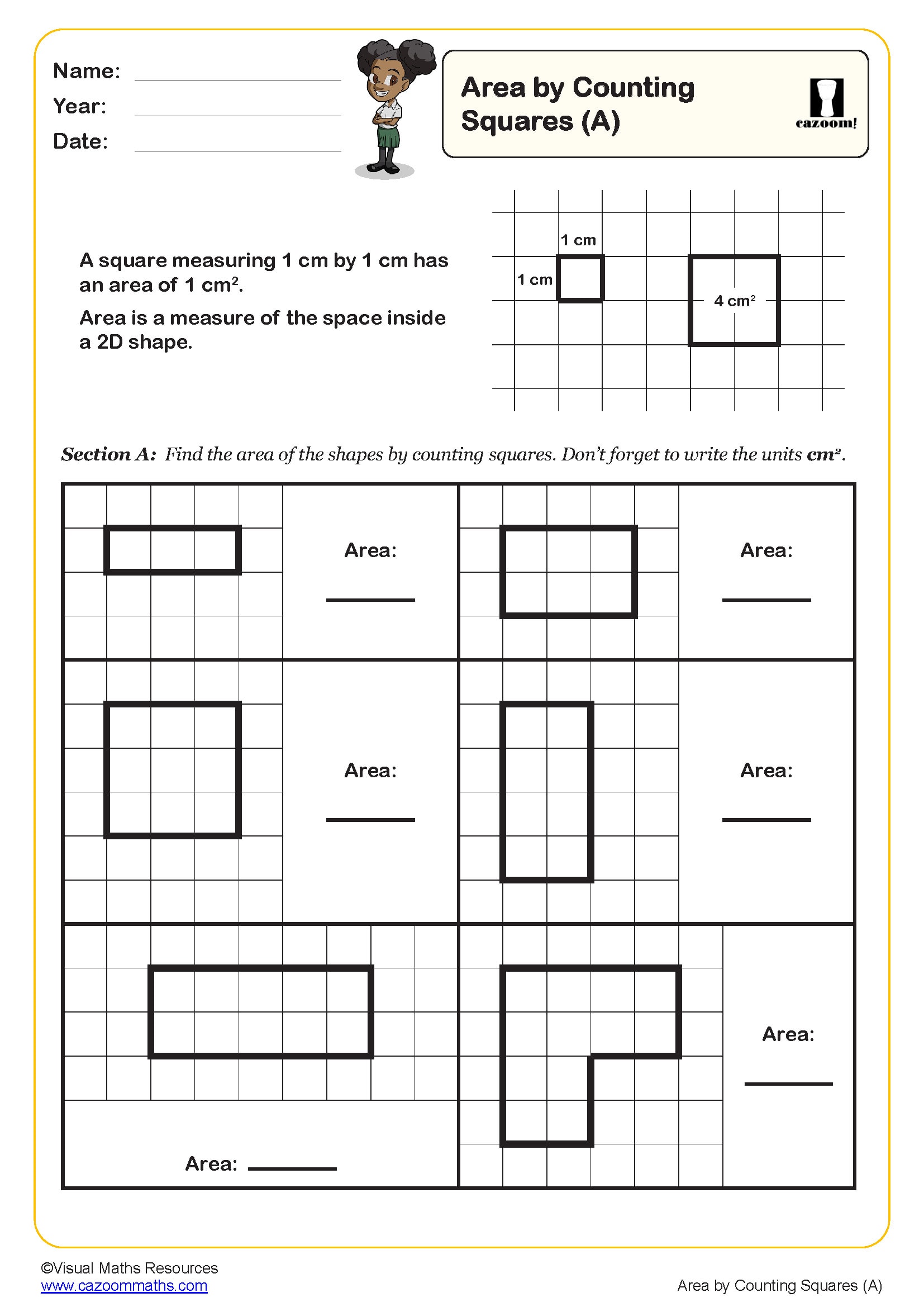
Area by Counting Squares (B)
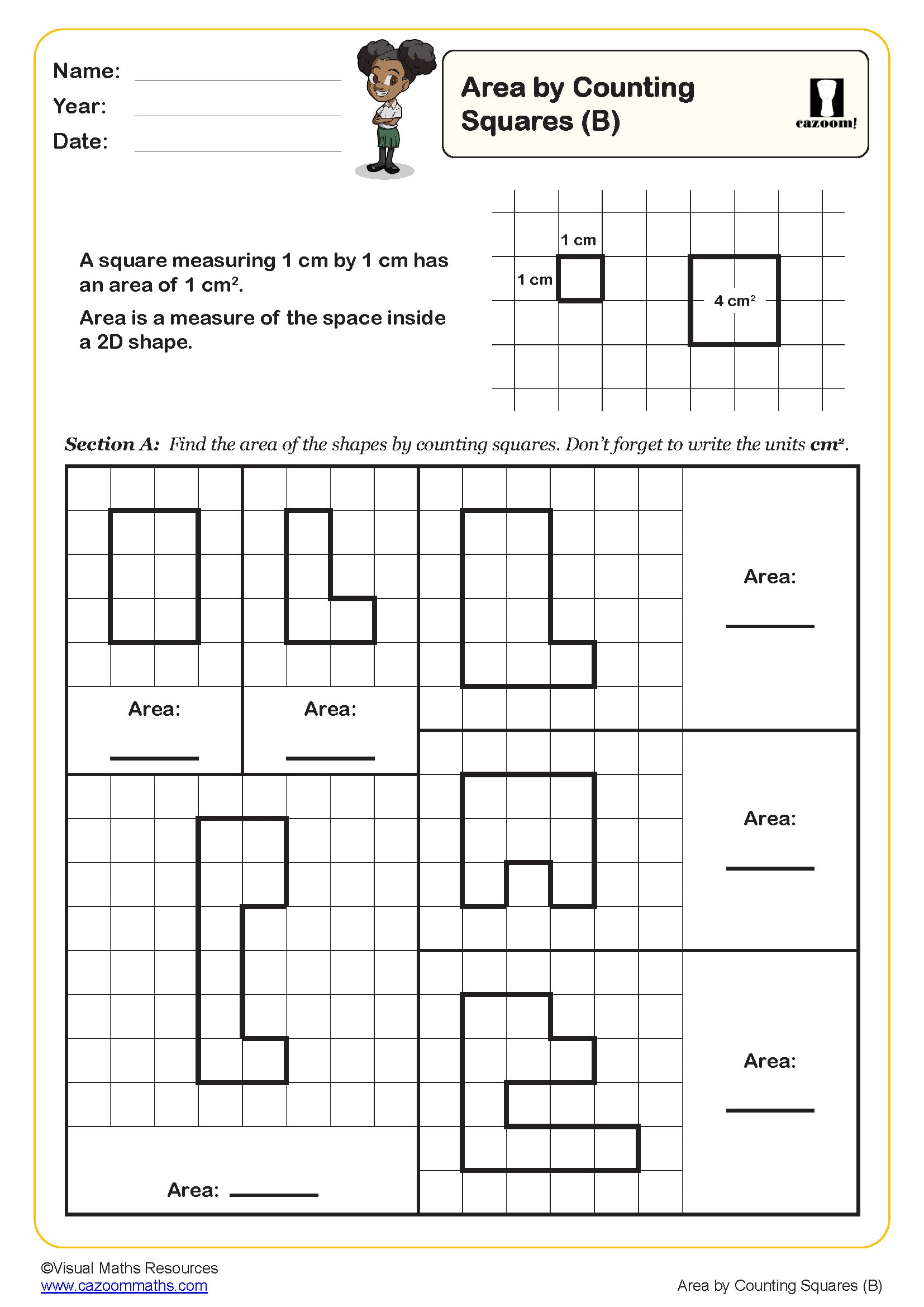
Area by Counting Squares (C)
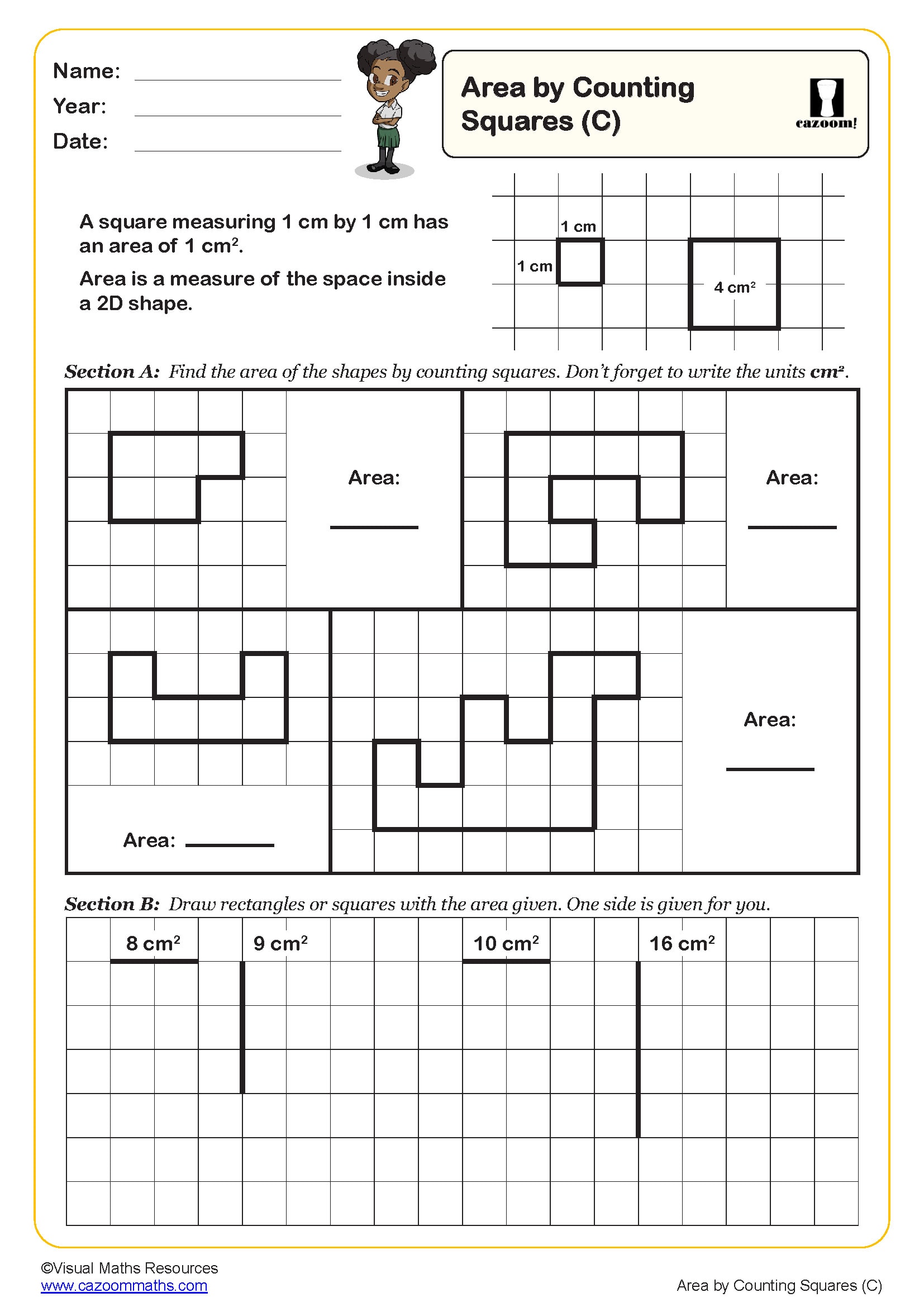
Calculating Missing Lengths in Rectilinear Shapes (A)
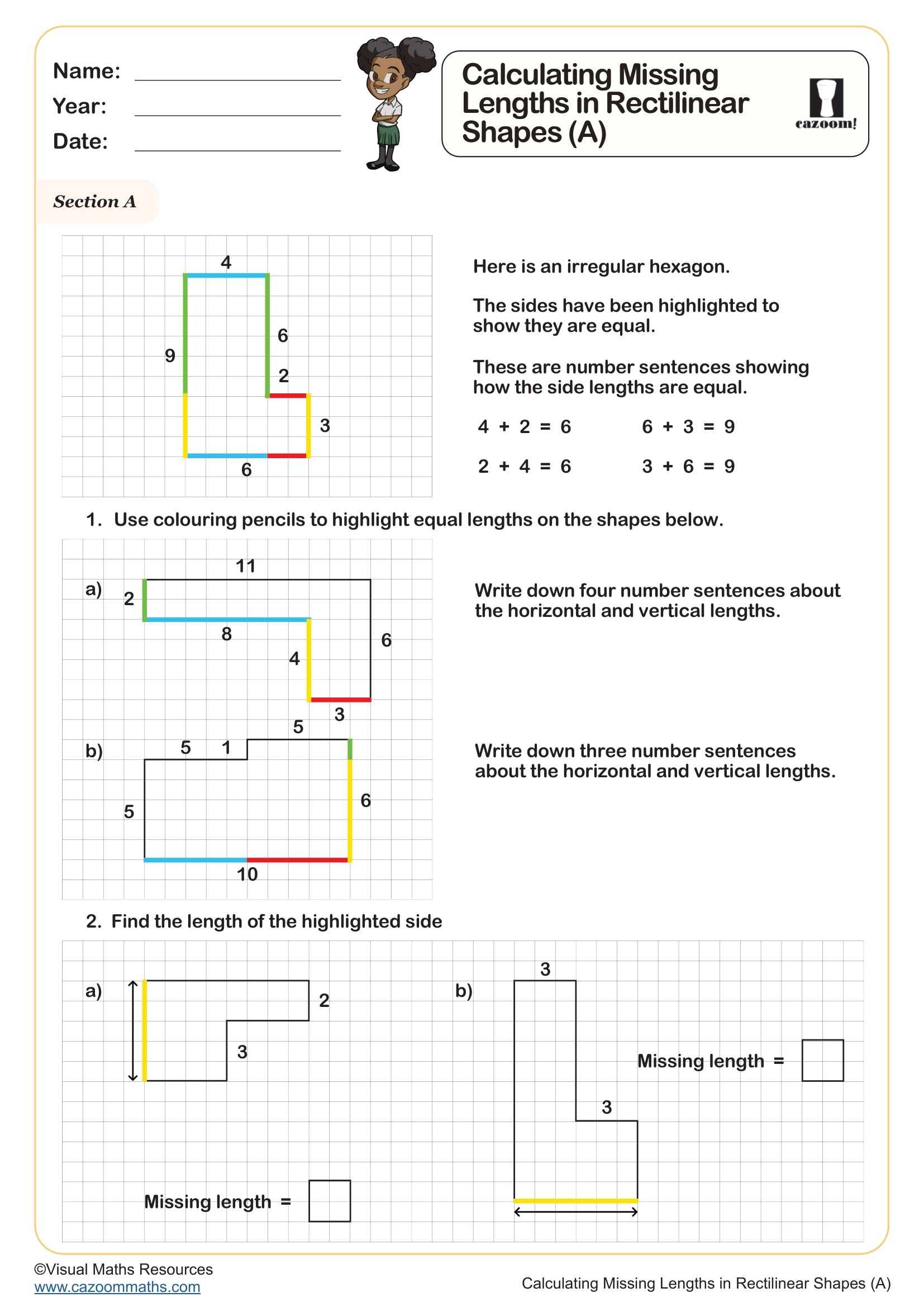
Calculating Missing Lengths in Rectilinear Shapes (B)
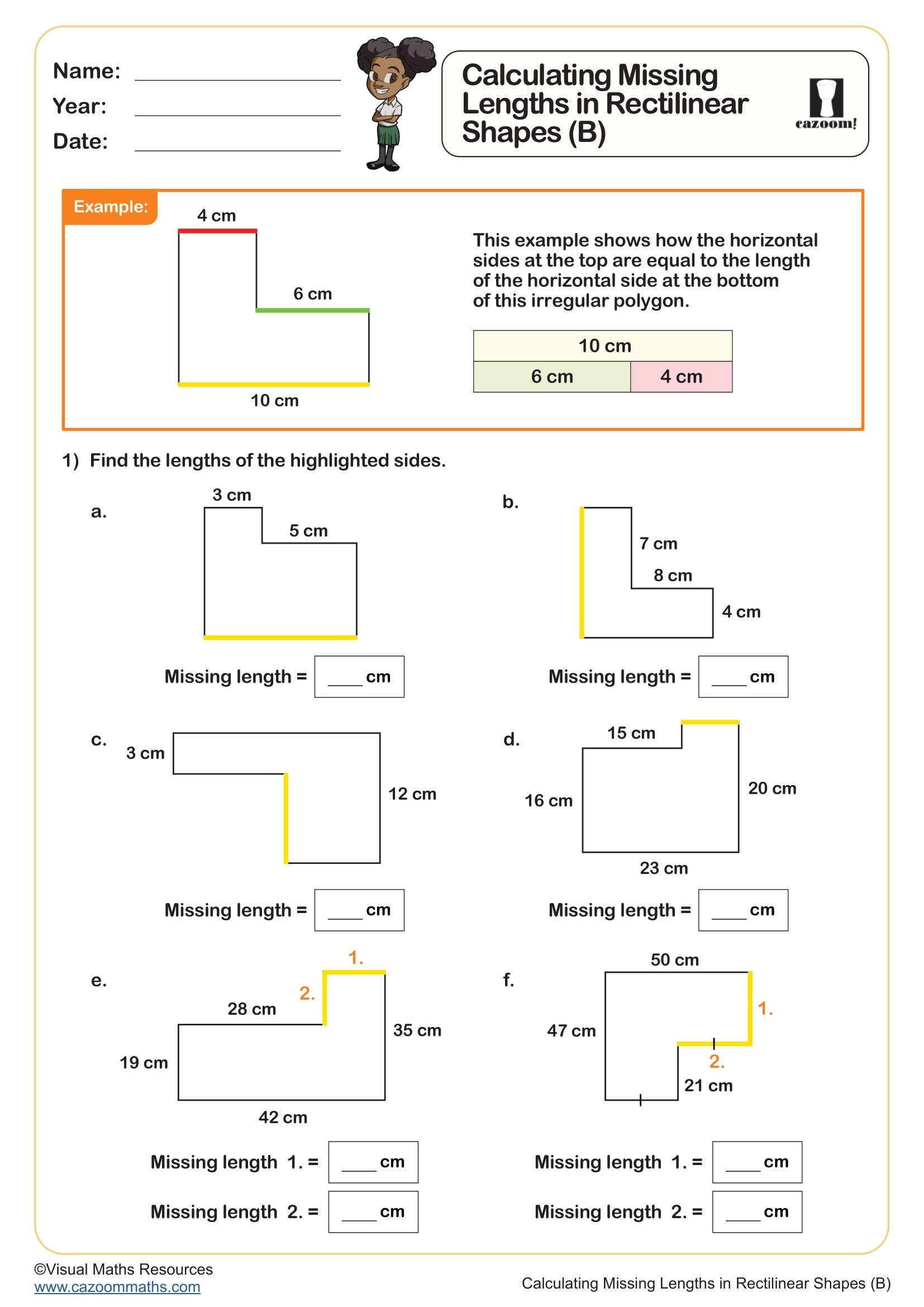
Comparing Area
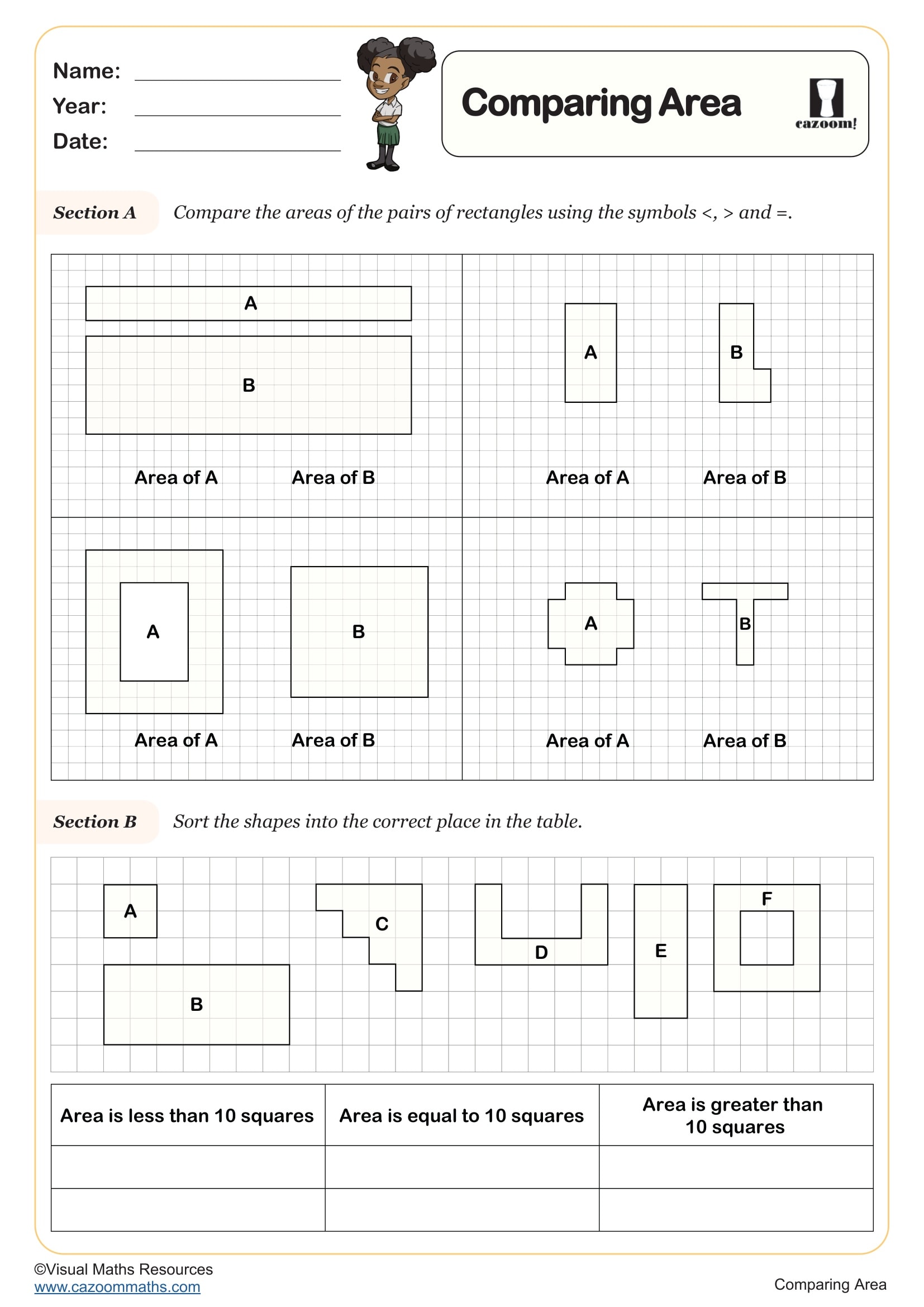
Finding the Missing Length From the Perimeter
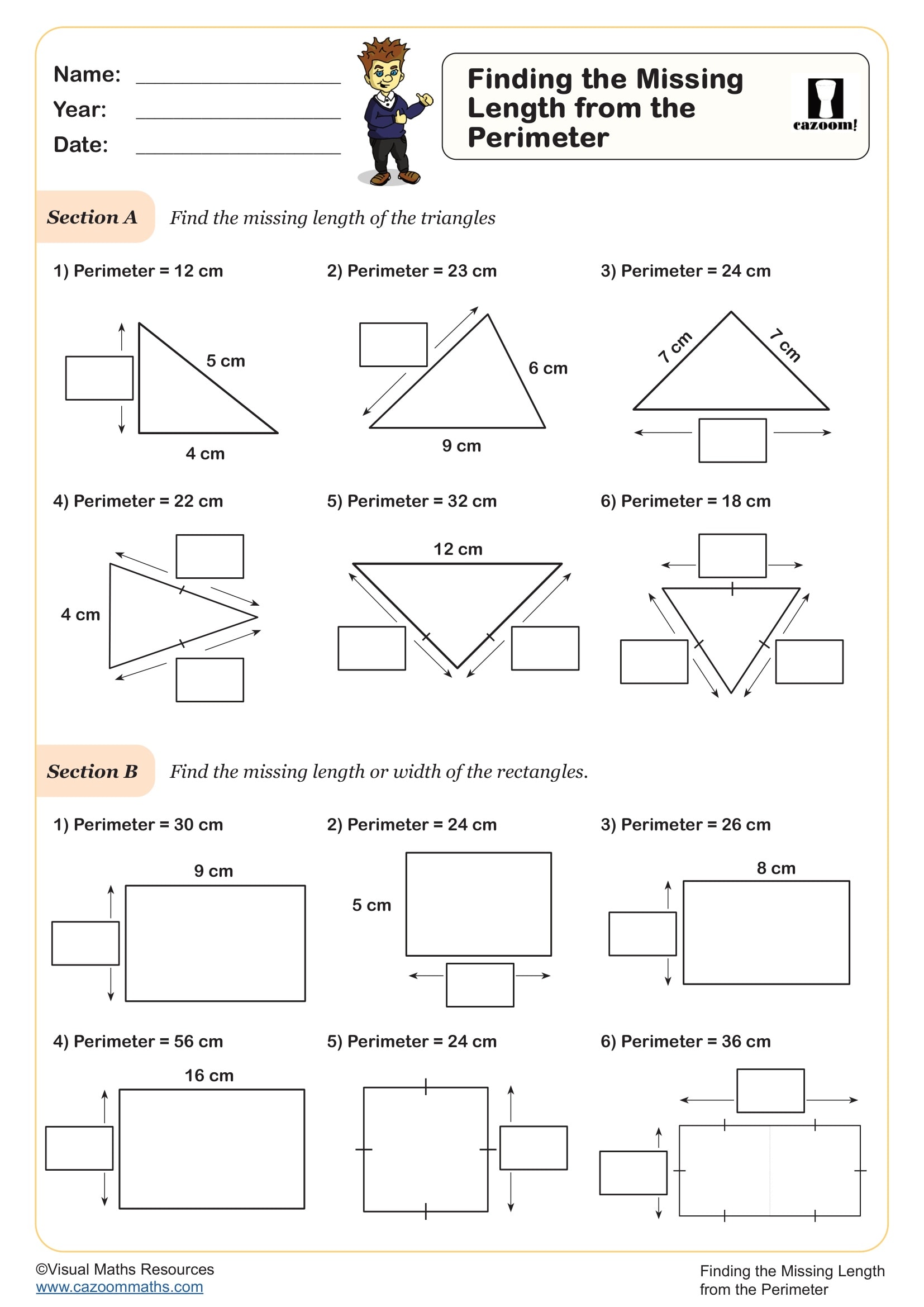
Measuring Perimeter in Millimetres
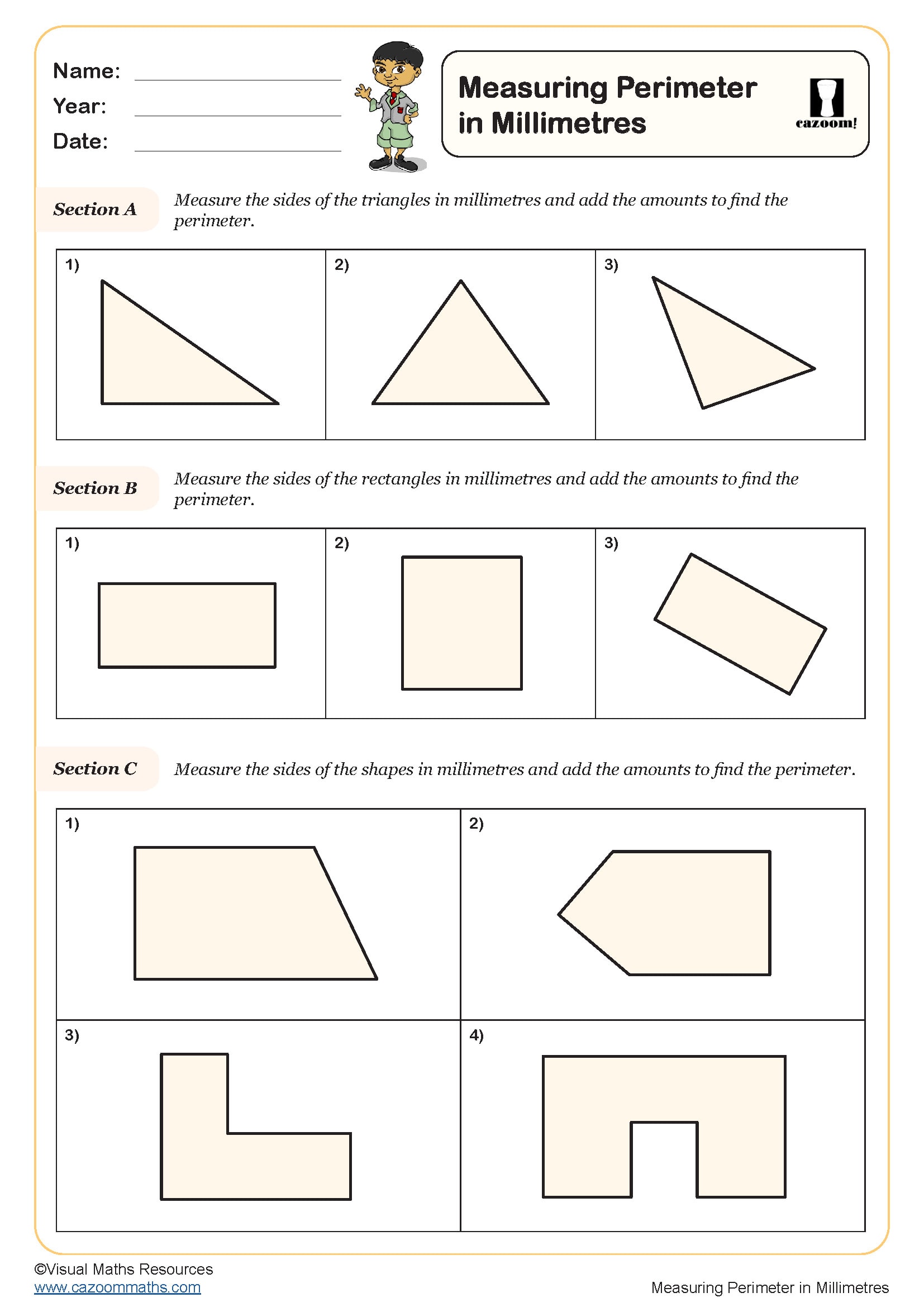
Perimeter of Shapes (A)
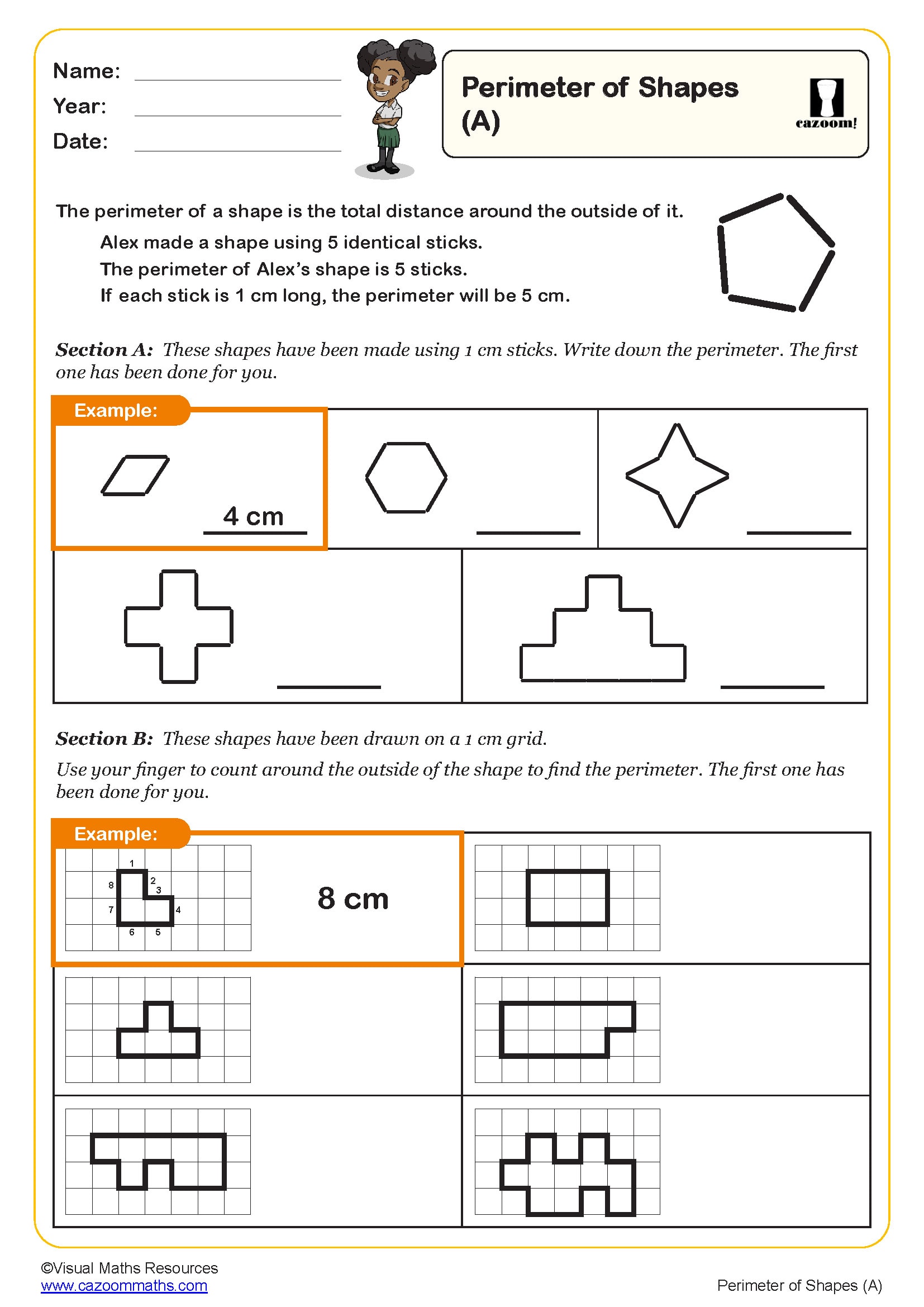
Perimeter of Shapes (B)
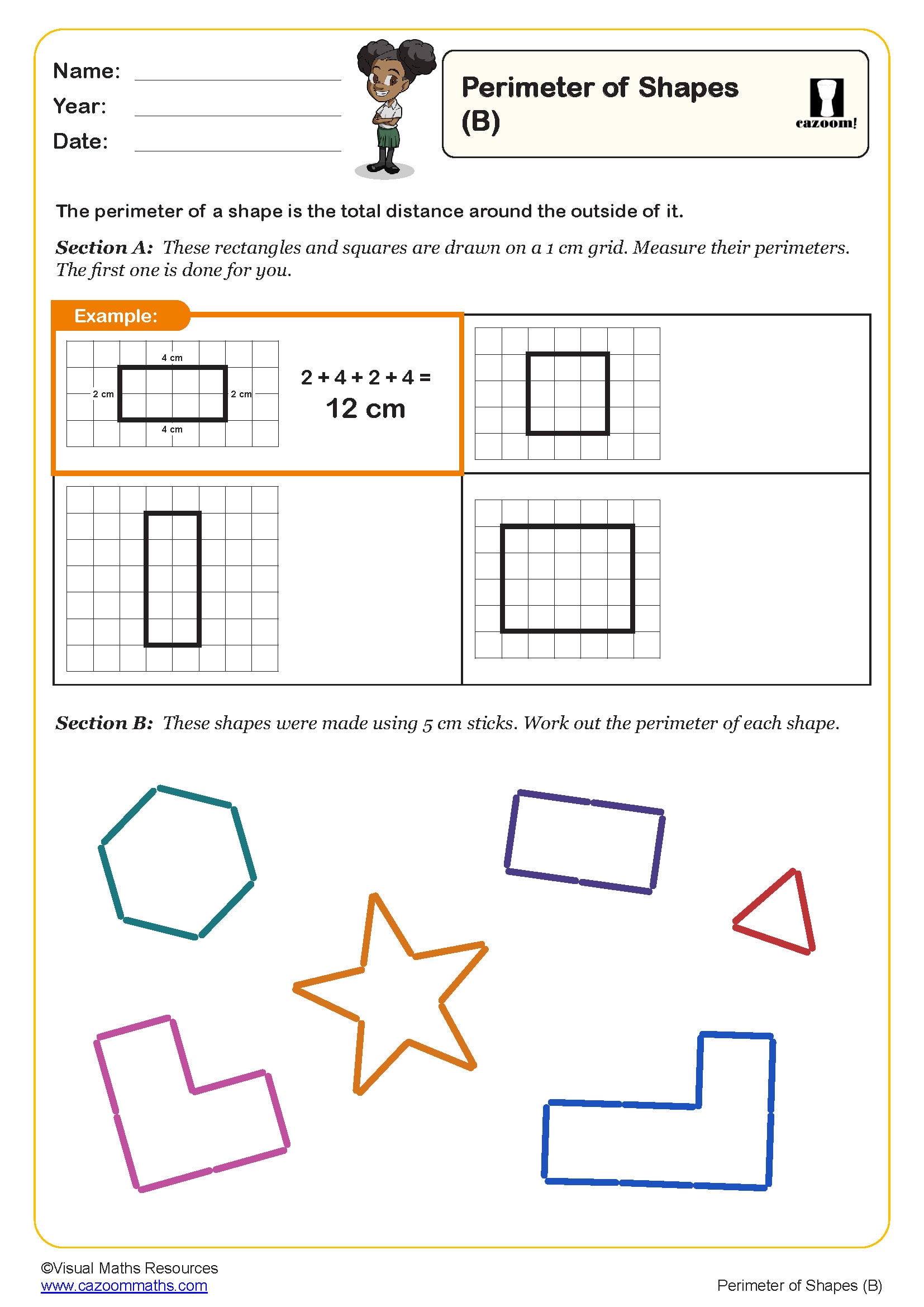
Perimeter of Shapes (C)
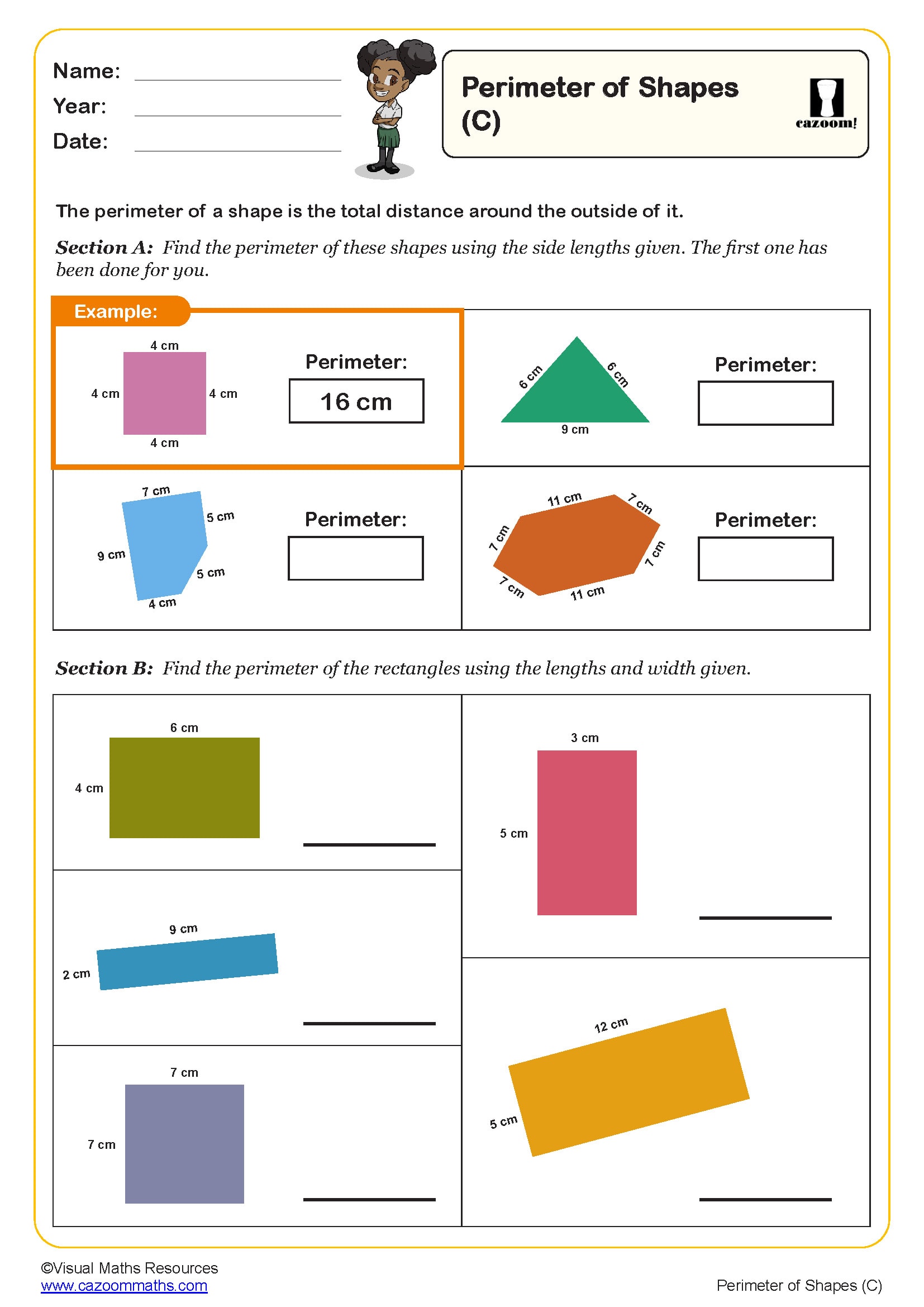
Complete Collection of Printable Area and Perimeter Worksheets for Year 3
Each worksheet follows a carefully planned progression—from recognising 2D shapes to applying formal methods for measuring perimeter and calculating area using square units. The downloadable PDFs include detailed, step-by-step solutions to help students follow the logic behind each problem, rather than just arriving at the answer. These clear explanations are especially useful for building conceptual understanding and supporting independent learning at home or in class.
Key Measurement and Geometry Skills Your Pupils Will Master
Our activities break down the area and perimeter in ways that are easy for Year 3 students to understand. Area is introduced as the space inside a shape—like how many square tiles it would take to fill a floor—while perimeter is taught as the distance around the edge, similar to walking along a fence line.
The worksheets encourage children to:
• Count unit squares to calculate the area
• Add side lengths to find the perimeter
• Identify the properties of common 2D shapes
• Tackle a variety of rectangles, squares, and irregular shapes
This helps deepen their spatial awareness and prepares them for more advanced geometry in later years.
Why Students Often Confuse Area and Perimeter – and How Our Worksheets Help
Many Year 3 learners mix up area and perimeter because they’re introduced around the same time. Our worksheets are designed to clearly separate the two concepts before bringing them back together in mixed challenges. This approach allows children to build confidence in each skill independently before applying them in tandem.
Benefits of regular practice with our resources include:
• Improved visual-spatial reasoning
• Stronger mental addition skills
• A clearer understanding of metric units
• Greater confidence when tackling geometry word problems
• A strong foundation for Year 4 and beyond
Real-Life Uses of Area and Perimeter in the Classroom and Beyond
Our worksheets include tasks that connect measurement to everyday experiences. Whether it’s planning a bedroom makeover or calculating how much fencing is needed for a school garden, students quickly begin to see the relevance of their learning. These real-world links not only boost motivation but also help reinforce key concepts across subjects like PE, science, and geography.
Practical applications covered in our worksheets:
• Estimating carpet or tile quantities for floors
• Measuring fence lengths for gardens
• Working out the paint needed for the walls
• Designing and planting vegetable beds
• Calculating fabric requirements for crafts
• Understanding the layout of sports fields